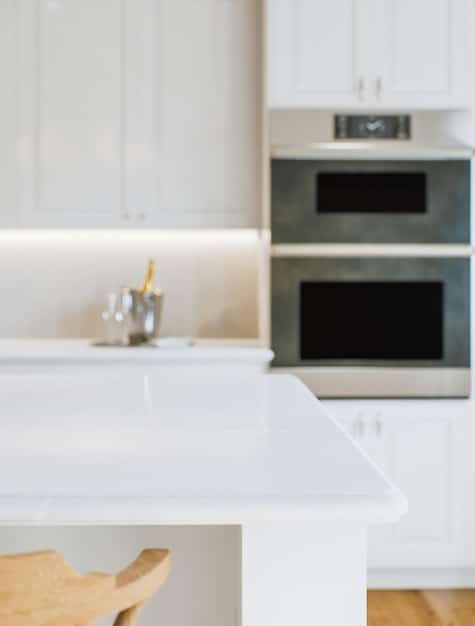Stage Your Home for a Quick Sale: Tips for the Current Market

Advertisements
Staging your home for a quick and profitable sale in the current market involves decluttering, depersonalizing, making necessary repairs, enhancing curb appeal, and creating a welcoming atmosphere to attract potential buyers and maximize your home’s value.
Ready to sell your home quickly and for the best possible price? How to stage your home for a quick and profitable sale in the current market is all about creating a space that appeals to a wide range of buyers, highlighting its best features, and minimizing any potential drawbacks.
Advertisements
Understand the Current Market Dynamics
Before you even think about rearranging furniture, it’s crucial to understand the current real estate market. Are you in a buyer’s market, a seller’s market, or a balanced market? This understanding will inform your staging strategy.
A seller’s market might allow you to get away with less staging, as demand is high. However, in a buyer’s market, where buyers have more choices, staging becomes even more critical to make your home stand out.
Advertisements
Research Comparable Homes
Take a look at recently sold homes in your area that are similar to yours. Pay attention to the photos and descriptions in the listings. What features are highlighted? What kind of staging is used?
Identify Your Target Buyer
Consider who is most likely to buy your home. Are you in a family-oriented neighborhood? Are you selling a condo in a trendy downtown area? Tailor your staging to appeal to that specific demographic.
- Families: Focus on kid-friendly spaces and practical features.
- Young professionals: Emphasize modern design and convenient amenities.
- Retirees: Highlight accessibility and low-maintenance features.
Ultimately, knowing your market and target buyer will help you focus your staging efforts where they matter most, maximizing your return on investment and speeding up the sale process.

Declutter and Depersonalize Every Room
Decluttering and depersonalizing are foundational steps in the staging process. They help potential buyers envision themselves living in the space, unencumbered by your personal belongings and taste.
Start by removing excess furniture, personal photos, and knick-knacks. The goal is to create a clean, organized, and neutral canvas that allows buyers to focus on the home’s features, not its contents.
The Power of Minimalism
Less is more when it comes to staging. Overcrowded rooms feel smaller and less appealing. Aim to create a sense of spaciousness and flow by removing unnecessary items.
Pack Away Personal Items
Store away family photos, religious items, and political memorabilia. You want buyers to see the home as a blank slate, not a reflection of your personal life.
- Rent a storage unit: If you don’t have enough space in your home, consider renting a storage unit to keep your belongings safe and out of sight.
- Donate unwanted items: Decluttering is a great opportunity to get rid of items you no longer need or use. Donate them to a local charity.
- Enlist help: If you’re feeling overwhelmed, hire a professional organizer to help you declutter and depersonalize your home.
By decluttering and depersonalizing, you’re creating a welcoming and inviting space that allows potential buyers to envision themselves living in your home, which is a crucial step in achieving a quick and profitable sale.
Focus on Key Rooms
While staging the entire home is ideal, focusing on key rooms can provide the biggest impact for your budget and effort. These rooms are typically the living room, kitchen, master bedroom, and bathrooms.
These areas are often the most scrutinized by potential buyers, so investing time and resources in these spaces can significantly enhance your home’s appeal and perceived value.
Living Room: The Heart of the Home
The living room should be inviting and comfortable. Arrange furniture to promote conversation and create a focal point, such as a fireplace or a large window with a view.
Kitchen: The Hub of Activity
The kitchen is often the most important room for buyers. Keep countertops clean and clear, update appliances if necessary, and add fresh touches like a bowl of fruit or a vase of flowers.
Master Bedroom: A Sanctuary
The master bedroom should feel like a relaxing retreat. Use neutral colors, soft bedding, and minimal decor to create a calming atmosphere.
Bathrooms: Clean and Spa-Like
Bathrooms should be spotless and inviting. Replace old shower curtains, add fresh towels, and display a few luxury bath products.
By strategically staging these key rooms, you can create a positive and memorable impression on potential buyers, increasing the likelihood of a quick and profitable sale.

Enhance Curb Appeal
First impressions matter, and your home’s curb appeal is the first thing potential buyers will see. Make sure your home looks well-maintained and inviting from the street.
Investing in curb appeal can significantly impact a buyer’s decision to even schedule a showing, so don’t underestimate the importance of a well-maintained exterior.
Landscaping
Mow the lawn, trim bushes, and plant flowers. A well-manicured lawn and colorful landscaping can make a big difference.
Exterior Paint
If your home’s exterior paint is faded or peeling, consider giving it a fresh coat. Choose a neutral color that appeals to a wide range of buyers.
Front Door
Make sure your front door is clean and inviting. A fresh coat of paint, a new doormat, and a potted plant can create a welcoming entrance.
- Power wash siding: Remove dirt and grime from your home’s siding with a power washer.
- Repair fences: Fix any broken or damaged fences.
- Update lighting: Install new exterior lighting fixtures.
By enhancing your home’s curb appeal, you’re creating a positive first impression that can draw in more potential buyers and ultimately lead to a faster and more profitable sale.
Make Necessary Repairs and Updates
Addressing any necessary repairs and updates is crucial before staging your home. Buyers are often turned off by obvious flaws or deferred maintenance. Attending to these issues can increase your home’s appeal and perceived value.
Tackling these repairs demonstrates to potential buyers that the home has been well-cared for, which can instill confidence and justify a higher asking price.
Address Obvious Flaws
Fix leaky faucets, repair damaged walls, and replace cracked tiles. These small repairs can make a big difference in the overall impression of your home.
Consider Cosmetic Updates
If your budget allows, consider making some cosmetic updates, such as painting walls, replacing outdated light fixtures, and installing new hardware.
Prioritize Based on ROI
Focus on repairs and updates that will provide the biggest return on investment. For example, a fresh coat of paint is often a cost-effective way to improve the look of your home.
By addressing necessary repairs and updates, you’re demonstrating to potential buyers that your home is well-maintained and move-in ready, increasing its appeal and ultimately leading to a faster and more profitable sale.
Create a Welcoming Atmosphere
Creating a welcoming atmosphere is about engaging the senses and making potential buyers feel comfortable and at home as soon as they walk through the door.
This involves more than just visual appeal; it’s about creating an emotional connection that resonates with buyers and makes them want to call your house “home.”
Lighting
Make sure your home is well-lit. Open curtains and blinds to let in natural light. Add lamps to dark corners to create a warm and inviting ambiance.
Scent
Use subtle scents to create a pleasant atmosphere. Avoid strong perfumes or air fresheners, as they can be overpowering. Freshly baked cookies or a simmering potpourri can create a welcoming aroma.
Temperature
Make sure your home is at a comfortable temperature. Adjust the thermostat to a pleasant setting before showings.
By creating a welcoming atmosphere, you’re appealing to buyers’ emotions and helping them envision themselves living in your home, which can be a powerful factor in their decision-making process.
| Key Point | Brief Description |
|---|---|
| 🧹 Decluttering | Remove excess items to create a spacious feel. |
| 🎨 Neutral Colors | Use neutral paint to appeal to more buyers. |
| 🌻 Curb Appeal | Landscaping and a fresh front door make a great first impression. |
| 🛠️ Minor Repairs | Fix leaks or cracks to show the home is well-maintained. |
Frequently Asked Questions
▼
Budget 1-3% of your home’s value. Focus on key rooms like the living room and kitchen for the greatest impact. Prioritize repairs and decluttering first.
▼
Yes, it often yields a higher sale price and quicker sale. They have experience in what appeals to buyers. Weigh cost vs potential return.
▼
Neutrals like beige, gray, and white are best. They appeal to most buyers and create a blank canvas. Add pops of color with accessories.
▼
Yes, staging a vacant home helps buyers visualize the space’s potential. Empty rooms feel smaller and less inviting. Consider virtual staging.
▼
It varies, but aim for 1-2 weeks. Decluttering takes the most time. Professional staging may be faster. Start early to avoid rushing.
Conclusion
How to stage your home for a quick and profitable sale in the current market involves careful planning, attention to detail, and a focus on creating a positive and memorable impression. By following these tips, you can increase your home’s appeal, attract more potential buyers, and ultimately achieve a successful sale.